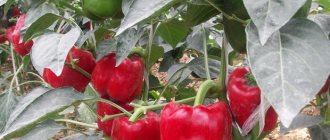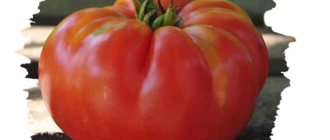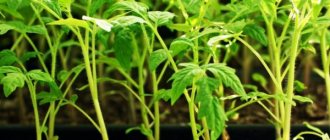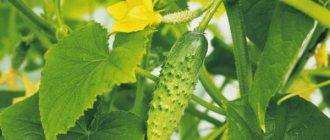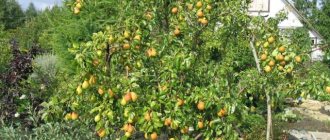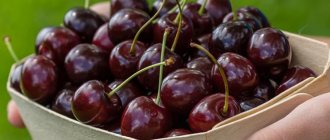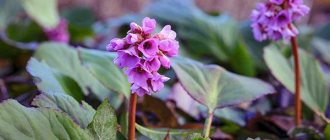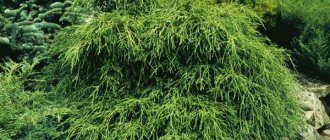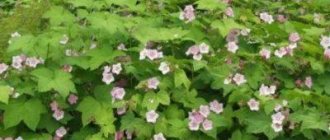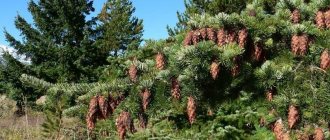What type of pepper is this?
The vegetable has long been known among summer residents - the variety began to be grown more than 30 years ago. It is mainly planted in greenhouses and greenhouses, but in the southern regions Tenderness also takes root in the open air.
The variety is early ripening; gardeners harvest the first harvest 100-110 days after planting. The bushes are medium in size, reaching a height of 80-90 cm. During the fruiting period, the plants need gartering, as they can break under the weight of the fruit.
Pepper is resistant to pests and crop diseases.
Fruit characteristics and yield
The fruits are smooth and even, cylindrical in shape (see photo). The weight of one pepper varies from 90 to 100 g. The wall thickness is 8 mm, the color is rich red.
Due to its medium size and tasty pulp, Tenderness is often used in preparing winter snacks and salads. From one bush, gardeners harvest about 2 kg of beautiful and appetizing fruits.
Variety of early vegetables
Pepper Chanterelle will delight you with the first harvest after 105 days. The bushes are compact, take up little space, and are low-growing. Small fruits at the ripe stage are orange in the form of a cone, weighing approximately 40 g. The hybrid does not tolerate cold well, so it is recommended to grow in greenhouses and hotbeds. Bogdan pepper is an early ripening plant. Approximately 100 days pass from the moment of germination. The height of the bush is approximately 55 cm. Yellow-orange vegetables of an elongated shape (length approximately 14 cm) weigh about 220 g. They rarely get sick and tolerate drought well.
Apollo pepper is an early-ripening hybrid for open ground and greenhouses. It reaches a height of up to 55 cm. Productivity is high; up to 14 prism-shaped red-orange fruits are formed on one bush, weighing about 170 g.
Pepper Nafanya enters the ripening stage already on the 95th day. The bushes are compact with a semi-determinant growth pattern. The height of the stem is about 120 cm. Bright burgundy vegetables with three sides can weigh 150 g. The variety is resistant to various adverse conditions and diseases, the harvested crop is stored for a long time.
Viking pepper allows you to harvest in 108 days. The height of the compact bush is small; the branches can accommodate up to 4 prism-shaped fruits, weighing approximately 200 g. The vegetable is resistant to viruses and bacteria, especially tobacco mosaic. The plant is unpretentious and adapts to any conditions, so the variety is suitable for open ground.
Agapovsky pepper belongs to the mid-early vegetables (100 days pass from the moment of germination). Compact bushes have a lot of foliage. The Agapovsky variety is characterized by high yield, rarely gets sick and is attacked by pests.
The disadvantage of the Agapovsky variety is poor shade tolerance; in this case, the bushes quickly wither. It is imperative to organize the correct watering regime. The Agapovsky variety can be planted in both protected and open beds.
The Agapovsky vegetable produces prism-shaped fruits about 12 cm long and weighing 115 g.
Capsicum pepper is a productive, early-ripening species. The bush is spreading and can reach a height of up to 120 cm. Cylindrical vegetables can weigh up to 250 g.
Description of the pepper variety Lyubov F1. Does not require special care, quickly adapts to various unfavorable conditions. From the moment of emergence of seedlings to the beginning of ripening, only 85 days pass. Bush, up to 65 cm high, compact, powerful, slightly spreading. Conical-shaped sweet vegetables up to 18 cm long weigh 150 g.
Vegetables of the Red Baron variety enter the stage of ripeness after 98 days and show resistance to the tobacco mosaic virus. The bush is of medium height, not very spreading. The fruits are in the form of a cube, weighing about 200 g.
Zorka pepper can be harvested on the 95th day. The plant is short (45 cm), weakly branched, unpretentious, resists infections well, and is therefore suitable for open ground. The vegetables are large, prism-shaped, red-orange in color, weighing about 110 g. Numerous crops begin to ripen together.
Vedrana pepper is a medium-sized, semi-spreading plant. It begins to bear fruit after 95 days. The fruits are large, cube-shaped, red-scarlet in color, weight 190-230 g. Vegetable growers note that the hybrid rarely gets sick.
Preparation for cultivation
To get a good harvest, summer residents prepare seedlings in advance. Its quality depends on the seeds and soil . Seeds of the Tenderness variety are purchased in gardening stores. Summer residents advise buying material only in trusted places, and when purchasing, study the expiration date and recommendations for planting. At home, inspect the seeds for damage and throw away any specimens with defects. Disinfect the remaining seeds in a solution of succinic acid or manganese. Some summer residents trust only professional means and disinfect seeds with the drug “Maxim”.
Important ! In order for the seeds to quickly adapt to external conditions, they are germinated. To do this, the disinfected seed material is wrapped in slightly damp gauze and placed in a warm place. Sprouting strengthens the plant's immunity and reduces the risk of disease.
Particular attention is paid to preparing the soil for seedlings. The soil should be nutritious and airy. Some gardeners use soil from the garden, having previously cleared it of debris and insects, while others prefer soil from the store.
In both cases, it is better to disinfect the soil yourself by placing it in the oven for 40-50 minutes. To improve the quality, peat or humus is added to it, as well as a natural leavening agent - purified river sand.
Planting seedlings
Seedlings of the Tenderness variety are prepared in late February - early March. Plant peppers in any container, for example, plastic cups, flower pots, wooden boxes. The main thing is to thoroughly rinse the container and disinfect it with manganese before planting. Pour soil into the container, make small holes 1-2 cm deep. Place two seeds in each, sprinkle earth on top and water generously with warm, settled water. The next watering will be organized only after 7-10 days.
Grow Tenderness on a sunny windowsill. If the weather is cloudy outside, the seedlings are provided with additional lighting using fluorescent lamps or phytolamps. Lack of light causes the leaves and stems of seedlings to weaken and stop growing.
Moisten the peppers as the soil dries, approximately once every 5-6 days. It is recommended to use a pipette for watering. The optimal water temperature is 18-20°C.
Important ! Fertilize the seedlings once every two weeks. Peppers are positively affected by fertilizing with ash, iodine, and ammonium nitrate. Summer residents alternate mineral complexes and organic matter so that the nutrition for the plants is consistent and balanced.
If the pepper is planted in small containers, it needs to be pruned after 2-3 weeks. Picking is the process of transplanting seedlings into larger containers. Over time, the roots need more space to develop, otherwise the seedlings will stop growing. However, experienced summer residents advise planting the vegetable immediately in a large container, since during the picking process, thin and fragile roots can break.
Mid-early terms
You will be able to try sweet pepper varieties with mid-early boundaries only a couple of days later.
Description of the type of sweet pepper Victoria. Sweet pepper Victoria begins to ripen after 112 days. It tolerates low temperatures well, resists many common infections and will delight you with a rich harvest. The color of the cone-shaped fruits becomes a rich red color, their length is about 11 cm, weight is 60 g. Reviews indicate that this type of vegetable can be planted without fear not only in a greenhouse, but also in open areas.
Pepper Tenderness is characterized by mid-early fruit ripening, approximately 118 days pass from the appearance of the first shoots. The bush is not too spreading, reaching a height of about a meter. It is recommended to grow in protected soil. The weight of mature, red vegetables is approximately 110 g, pyramidal shape, length 11 cm. The plant resists many diseases, including tobacco mosaic.
Samander pepper is distinguished not only by its early ripening of fruits, but also by its high yield. The bush is low and compact. It tolerates bad weather conditions well; the leaves are protected from sunburn by thick skin. Dark red vegetables have an elongated shape with a pointed end and weigh 110 g.
The mid-late pepper hybrid Aristotle F1 tolerates various weather conditions well. The height of the powerful, leafy bush is approximately 70 cm. The cube-shaped fruits can weigh about 200 g. The hybrid has good immunity, so it rarely gets sick.
Marconi pepper is characterized by medium-early harvest ripening (110-115 days). Sweet fruits of an elongated shape (about 25 cm long), pointed at the end, weigh on average 170 g. Feels great in open beds. The height of the powerful stem is approximately 60 cm.
The early species include Ivanhoe pepper. Juicy, red fruits, weighing 110-150 g, begin to turn red after 115 days. The yield of this variety is very high. Ivanhoe pepper does not tolerate cold well; the soil should always be warm. Therefore, it is better to plant in a greenhouse.
Ivanhoe pepper has a long list of positive aspects. Even dense planting of seedlings will not reduce high yields. In the description of Ivanhoe pepper, it is worth mentioning the juicy and aromatic fruits, even in a semi-ripe state. The harvested crop is suitable for long-term storage and transportation over long distances. The Ivanhoe variety rarely gets sick and is attacked by pests.
Planting peppers in beds
Before planting seedlings in the garden, the beds are dug up, cleared of debris and fertilized with peat. The first digging is organized in October, before the snow. The beds are prepared again immediately 10-15 days before planting.
It is better to plant vegetables after onions or legumes. It is not recommended to use potato or tomato beds for peppers.
Since Tenderness is a greenhouse variety, the walls of the greenhouse are wiped with a solution of Bordeaux mixture to protect the pepper from weeds and pests.
In the beds, depressions are made at a distance of 20-30 cm from each other. The seedlings are carefully pulled out of the container and placed in the ground. Before transplanting, the seedlings are watered so that the bushes can be easily removed from the container. When the sprout is on the bed, the stem is sprinkled with soil on all sides and watered abundantly again. A wooden peg is installed in advance next to each bush - it will be needed for gartering the bushes.
About the variety
The “Tenderness” pepper variety is a vegetable that has been tested by more than one generation of summer residents. It was included in the GOST register back in the 80s of the last century. Gardeners and summer residents prefer it for its good adaptation to any soil, frost resistance and active resistance to diseases and various microorganisms that harm plants.
Pepper fruits with delicate and thin skin have a pyramidal shape, slightly elongated. They are very juicy and fleshy, thanks to the thickness of their walls, which reaches 8 mm. The weight of one pepper varies from 90 to 115 grams. Thanks to its qualities, it has become so popular among farmers. According to reviews, this pepper is also the best for use in cooking. It is perfectly stuffed and does not deform during heat treatment. Pepper gives canned salads a rich taste and thick consistency.
But, of course, eating fresh peppers, which are naturally rich in various vitamins and minerals, will bring more benefits. Its qualities do not disappear even after drying under the summer sun.
Plant care
When growing crops in a greenhouse, the structure is regularly ventilated. If this is not done, heat and humidity will lead to fungi and infections. Water the pepper as the soil dries, approximately once every 4-6 days. One bush consumes 1.5-2 liters of water.
Periodically, regular watering is replaced with fertilizing with solutions of nettle or burdock. These folk remedies improve the taste of fruits and protect plants from negative factors. It is better to moisten the beds in the early morning to avoid sunburn.
In addition to hydration, peppers need additional feeding. Potassium-phosphorus compounds and wood ash have an excellent effect on bushes. They are applied 2-3 times per season before watering. In addition, manure and bird droppings are recognized as excellent fertilizers. They strengthen the root system, especially if fertilized during flowering or fruiting. Before the procedure, the ground is loosened and weeds are removed.
Agricultural technology for growing the variety “Prince Igor”
Preparing the soil for seedlings
Since in the vast majority of regions of Russia it is difficult to find a region where the warm season is at least slightly longer than 90-100 days, this variety should be grown by seedlings. Therefore, preparing the soil for seedlings plays a key role.
To plant seeds, prepare a light and loose mixture of turf, peat (or humus in one part) and sand in a ratio of 2:2:1. It is recommended to disinfect the prepared mixture by freezing in the open air, or by steaming and calcination. In addition to physical disinfection methods, you can use chemical ones: treat the soil mixture with a weak solution of potassium permanganate or any available fungicide.
Important! Immediately before placing in containers, the soil should be fertilized with a mixture of nitrogen, phosphate and potassium fertilizers (20 g of each) or a mixture of ash (1 cup) and 40 g of nitroammophosphate.
Seed preparation
First of all, before planting, the seeds are hardened for 3-5 days: alternately kept in the refrigerator on the bottom shelf and in a warm place for 3-5 hours. Next comes the selection process, which consists of soaking the seeds in water: good seeds will sink, while bad ones will float, which means they should be removed.
Let's remember. Important! When hardening the seeds, it is necessary that they are dry.
For greater disease resistance, experienced agronomists recommend disinfecting the seeds. For example, fill a gauze bag with pepper seeds and immerse them in a 2% solution of potassium permanganate for 3-5 minutes, after which the seeds should be thoroughly rinsed with warm water and dried. Instead of potassium permanganate, any high-quality fungicide will do. Also, to speed up germination, seeds can be treated with growth stimulants. However, this applies to seeds collected at home, because seeds in specialized stores, as a rule, go on sale already processed.
After the above treatment, the seeds can be germinated: scatter them evenly on gauze, folding it in several layers. After this, the gauze should be moistened and the seeds should be left in this form until they germinate. This usually takes about 5 days. The germinated seeds should be dried and they are ready for planting.
Planting seeds in containers for seedlings and first care for them
Place the soil mixture into the prepared container and lightly moisten it. Sprouted pepper seeds should be placed to a depth of no more than 1 cm, since in wet soil they will “sink” into the ground. After planting, the soil should be periodically moistened with a sprayer.
It is also important to lightly loosen the soil, preventing the formation of a dry crust on the soil. Picking seedlings can be carried out at the stage of 2-3 true leaves
Seedlings should be kept in a greenhouse or a warm room and hardened only a few days before planting by placing them in cold air. The time of exposure to cold air gradually increases from several hours to a full day.
Important! In order for the pepper to ripen, seeds should be planted for seedlings in late February or early May.
Planting seedlings in the ground
2-2.5 months after planting the seedlings, when the last frosts have passed, the seedlings are planted in the ground
When choosing a planting site, it is important to follow the rules of seeding: the “Prince Igor” pepper grows well after cabbage, cucumbers, beets and carrots. The pattern for planting pepper in the ground is 40 by 60 cm, since the bushes of this variety are huge
Before planting seedlings, they should be watered abundantly - this will prevent damage to the root system; in addition, overdried and lethargic seedlings take root worse.
Important! A special feature of the “Prince Igor” variety is that it is subject to mandatory garter. Therefore, pegs are 50-60 cm high
dug in next to the plant simultaneously with planting seedlings.
Caring for planted plants
Further care consists of timely and abundant watering
It is important to prevent dry crust from appearing on the soil and to loosen and remove weeds in the periods between waterings. As the bush grows, it is tied to stakes planted during planting.
Nuance! If, due to cool weather, the fruits do not have time to gain weight and ripen, it is recommended to remove the lower leaves from the bush, as well as small ovaries, which will definitely not have time to gain weight and ripen before the first cold snap.
Top dressing
The “Prince Igor” variety responds positively to fertilizing, which experienced agronomists recommend doing at least 3 times during the entire growth period. The first fertilizing should be done within a few days from planting in open ground - with a superphosphate solution. The second feeding is carried out during the flowering of the bushes with solutions of phosphate and potassium fertilizers. During fruit ripening, the last fertilizing is carried out with a solution of superphosphate and potassium salts.
Features of cultivation and possible difficulties
When applying fertilizing, be sure to follow the dosage and recommendations. An excess of minerals causes the leaves to turn yellow and dry out. Abundant watering, which washes minerals out of the ground, helps correct the situation. Wood ash also combats the problem well. Experienced gardeners advise always keeping a supply of ash with you, as it is recognized as an effective solution to many problems.
During the fruiting period, bushes of the Tenderness variety are tied to a support. Wooden stakes are disinfected in advance with manganese, and clean strips of fabric are prepared. It is better to use regular cotton, as synthetic materials are slippery and often come untied. The fabric is carefully wrapped once around the stem and a knot is tied on the peg. Do not tighten the knot tightly, as the stem may break.
Typical diseases and pests
Colorado potato beetles are sometimes found in pepper beds. Insects hide deep in the soil in winter and appear on the bushes when the weather warms up. Both adult striped pests and their larvae are dangerous. Beetles eat leaves, taking away from the plant minerals and vitamins necessary for development. If no action is taken, the pepper will die. The drug “Typhoon” or spraying the beds with a solution of copper sulfate helps fight the beetle.
They also love to eat peppers and slugs. Unpleasant and slippery insects suck the juice from plants, thereby disrupting metabolism. Spraying with a special solution helps in the fight against them: 15 drops of iodine and 0.5 liters of milk per 10 liters of water.
Among the diseases, gardeners note late blight, which appears due to heat and high humidity . A sign of late blight is brown spots on the leaves. Whey or the drug "Oxychom" helps in the fight against fungus. Also, sometimes peppers get sick with tobacco mosaic. The virus appears as a yellow pattern on the leaves. Tobacco mosaic is treated with saline solution or manganese.
Advantages and disadvantages of the variety
The main advantages of the Tenderness variety are attractive red fruits and juicy sweet taste. Housewives actively use vegetables for preparing dishes: soups, side dishes, salads and preparations for the winter. The pepper has plasticity and elasticity; it makes delicious crispy snacks.
The vegetable contains a large amount of vitamins and minerals, which have a positive effect on human health and prevent many diseases. Pepper Tenderness is easy to care for and unpretentious to grow. Thanks to its thick walls, it is well stored and can be transported over long distances.
One of the disadvantages is the need to garter the bushes. Beginning gardeners sometimes have difficulties with this procedure. Also, the Tenderness variety is best grown in a greenhouse rather than in open ground. In this aspect, it loses to those peppers that show excellent results in any conditions.
Characteristics of pepper “Tenderness” with photos and reviews
In order to grow a good harvest of sweet peppers, summer residents have to work hard. Especially if the climate of the region is completely unfavorable for such a heat-loving crop. But it is not for nothing that Tenderness pepper is considered one of the best varieties, since it will “produce delicious and aromatic fruits” even in the harsh conditions of the Urals, Siberia or the North-West.
Read also: The best varieties of eggplants for central Russia
Reviews
What do experienced gardeners and novice farmers say about the bell pepper Tenderness? Let's look at a few reviews about the variety.
Galina, Voronezh: “ I grow 2-3 varieties of peppers in my garden every year. Last season I planted Tenderness and was pleased. Bright red peppers look beautiful both on bushes and on the table. The taste is excellent, there are few seeds, the ideal variety.”
Marina, Moscow: “I’ve been growing “tender” peppers for seven years now, and each time the new harvest turns out better than the previous one. The whole family loves to eat fresh vegetables or prepare snacks for the winter. The plants never got sick and were never a hassle to care for. I recommend it for cultivation."
Peter, Saratov: “I purchased the seeds, on the packaging the manufacturer recommended planting the vegetable in a greenhouse. I decided to plant with seeds, without seedlings. As a result, the fruits set poorly and grew thin. I collected only 1 kg from one bush. I wasn’t impressed with the variety.”
Characteristics and description
Bell pepper Tenderness is very popular among vegetable growers and summer residents and deservedly so. It is endowed with useful and excellent qualities:
- Mid-early;
- Medium-sized: its height is from 80 to 140 cm (depending on growing conditions), standard;
- Early ripening (begins to bear fruit 110-120 days after germination);
- The bush is semi-spreading, compact;
- To increase productivity, it is useful to form: remove all side shoots, leaves up to the First fork;
- Better to tie it up;
- The productivity is high - up to 2 kg of peppers can be harvested from one bush.
- The fruits of this variety have valuable and useful qualities:
- The shape of the fruit is elongated-cone-shaped, up to 10-12 cm in length;
- In the technical ripeness phase, peppers are light green, ripe ones are bright red;
- Thick-walled variety: wall thickness – 6-8 mm;
- The skin is thin, glossy, durable, delicate;
- The average weight of peppers is about 70-110 g;
- The stalk is short and breaks off without effort, which is why it is very convenient to pick these peppers from the bush;
- The pepper pulp is juicy, aromatic, tender;
- Pleasant, delicate taste.
Read also: Strawberry Alexandria as a small-fruited beardless, detailed description, pomological characteristics, Berry garden, or applied gardening in tips, questions and answers
Purpose: mainly salad, for fresh consumption. If you add Tenderness peppers to hot dishes or preserve or marinate, then you need to take into account that due to the delicate consistency of the pulp and skin, these peppers cook very quickly and are excellent for stuffing.
Peppers of the Tenderness variety contain many vitamins and carotene. It is recommended for people who have diabetes, insomnia, memory loss, and loss of strength.
Resistance to diseases and pests
Pepper Tenderness is resistant to most diseases characteristic of the nightshade family, in particular to the tobacco mosaic virus. However, in some cases, pepper may become infected with fungal diseases.
In order not to manually collect the Colorado potato beetle from nightshade plants and not to overdo it with chemicals, knowledgeable gardeners keep guinea fowl, which perfectly destroy the beetle by feeding on it.
This happens if in greenhouses and other premises where peppers are grown, temperature and light conditions are not observed, there is excessive humidity, crop rotation rules are not followed, or other diseased plants are planted nearby.
To prevent infection of peppers and their diseases, it is best to take preventive measures:
- The greenhouse or other room must be kept clean;
- Follow the rules of crop rotation;
- Maintain the required temperature and light conditions;
- Avoid overmoistening;
- Do not plant diseased plants in greenhouses;
- Loosen the soil and water the bushes in a timely manner;
- Treat peppers with fungicides against fungal diseases;
- It is better to remove diseased plants.
In addition to diseases, peppers can be damaged by various pests, especially in enclosed spaces: greenhouses, etc.:
- Aphids: pepper bushes need to be sprayed with insecticides;
- Slugs: either collect them manually, or place special traps; it is very good to plant mustard or parsley in the spaces between the rows - slugs do not like them, but the green mass of mustard can then be dragged into the soil.
Mustard is a good organic fertilizer. In addition, it disinfects the soil, expels wireworms and other soil pests.
- Colorado potato beetle: it is useful to spray pepper bushes with infusion of celandine, collect beetles by hand, and do not plant peppers, eggplants, tomatoes, potatoes, and others from the nightshade family next to each other. They have common diseases and common pests;
- Spider mites: it is useful to spray peppers with an infusion of garlic, onion and liquid soap.
By carefully following the necessary rules for growing garden crops indoors, you can avoid plant diseases, as well as damage to them by various pests.
By carefully following the necessary rules for growing garden crops indoors, you can avoid plant diseases, as well as damage to them by various pests.
Advantages and disadvantages
Characteristics of the pepper variety Tenderness emphasizes its advantages and disadvantages.
Advantages:
- Juicy, fleshy flesh of peppers;
- Wonderful taste;
- Successful transportability;
- Stable yield;
- Ability to ripen;
- Universal use;
- High productivity and attractive marketability;
- Extensive distribution area: peppers successfully grow and bear fruit even in the Leningrad, Vologda, Moscow and Arkhangelsk regions.
There are practically no obvious shortcomings; except that:
- Does not tolerate drying out, as well as moisture;
- Demanding about compliance with light conditions and humidity levels.
Pepper Tenderness is great for growing in greenhouses and other closed ground. If you follow the regime required by the variety, you can get a significant harvest of fruits that will delight you with their juiciness and tenderness.
Features of growing the variety
Agricultural technology for growing Tenderness pepper is simple and easy, which is confirmed by the description of the properties of the variety.
- Seeds must be disinfected before planting, even if they are from well-known producers. It is useful to soak the seeds in a solution of potassium permanganate, hydrogen peroxide, etc.
- It is better to sow Tenderness pepper seeds two or three seeds per hole in the second half of February, preferably directly into peat or plastic cups. Peppers do not like transplants and do not tolerate them well. And you need to carefully remove the pepper from the plastic cup so as not to disturb the root system of the plant, and plant it in the ground. Seedlings in peat pots can be immediately planted in the ground without disturbing the roots.
- Peppers should be planted at a distance of 50x50, preferably using the square-cluster method: this way the plants are better illuminated, this makes it easier to water, loosen, and harvest. This way the peppers are better ventilated.
- To form bushes: remove the lower leaves and branches to the fork. Tie it up then.
- Feed the peppers with phosphorus, potassium, and nitrogen fertilizers, but do not overfeed!
- Water on time, but do not over-water.
- If there is not enough natural light, supplement the lighting with special phytolamps.
Overfeeding plants is very bad: in this case, the peppers begin to grow leafy green mass instead of starting to bear fruit. This is especially true for nitrogen fertilizers.
Timely loosening, weeding, and ventilation are very necessary for pepper. If you follow these simple conditions for caring for Tenderness peppers, you can grow strong bushes and reap an excellent harvest.
Pepper Tenderness will give you juicy, aromatic, very tasty fruits if you give it the necessary time to care. Agricultural technology for pepper is not burdensome, but by planting it in a greenhouse or other closed ground, you can enjoy your favorite fruits for a long time.
Great weather and rich harvests!
